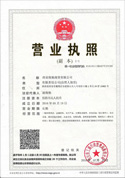Precautions for packaging puffed food
Puffed snack food is a new type of food that emerged in the late 1960s. Due to its porous and fluffy structure, crispy and sweet taste, and certain nutritional value, it is very popular among people, especially children.
Due to the unique taste of puffed snack foods, the requirements for external packaging are relatively high. The following are several important factors that affect the shelf life of puffed snack foods:
1. The quality of the barrier performance of packaging materials. The packaging form of puffed snack food is relatively simple, and it is generally customary to use plastic composite pillow bags as product packaging. There are various types of plastic composite packaging materials, including plastic plastic composites, paper plastic composites, aluminum plastic composites, and many other composite combinations.
By using different composite combinations, it is possible to meet the packaging strength, sealing, oxygen resistance, water resistance, light resistance and other requirements of different foods. The water and oxygen resistance performance of puffed snack food packaging directly affects the quality of the product during its shelf life. This testing can solve problems such as oxidation deterioration, moisture induced taste deterioration, and mold growth caused by sensitivity to oxygen or water vapor.
At present, the standard for testing the breathability of packaging materials in China is GB/T 1038, which stipulates the use of the pressure difference method to test the gas barrier performance of packaging materials; The standard for moisture permeability testing is GB/T 1037, which uses the weighing method to test the moisture permeability of materials such as plastic films and composite films.
Enterprises can choose Labthink Languang's VAC-V1 differential pressure gas permeameter and W3/060 water vapor permeability testing system. The instruments strictly comply with relevant standards, and the equipment is computer-controlled. The test automation is high, the testing accuracy is high, and the performance is stable. VAC-V1 test gases include not only oxygen, but also nitrogen, carbon dioxide and other gases, which can meet different testing needs of customers.
2. Gas content in the headspace of the bag. Puffed snack foods are fragile. During production, transportation, and sales, it is important to avoid mechanical or external pressure on the product. Additionally, these foods are prone to moisture and oxidation. Therefore, puffed snack foods are usually filled with inert gas nitrogen.
If there is too much residual oxygen in the packaging, it can easily cause the proliferation of microorganisms, leading to mold and deterioration of the product. For this type of packaging, HGA-01 headspace gas analyzer can be used to detect and analyze residual oxygen, thereby guiding the shelf life of the product.
3. The quality of packaging sealing performance. Puffed snack food is a product that is highly susceptible to moisture, oxidation, and deterioration. In addition to controlling the barrier properties of packaging materials, it is also necessary to ensure the sealing reliability of the entire packaging to prevent contamination and deterioration of the product due to leakage. The poor sealing performance mainly comes from the sealing part, so the focus of sealing testing should be on whether there is any leakage in the sealing part.
The sealing area may leak due to insufficient material heat sealing performance and sealing strength. The testing of sealing strength (heat sealing strength) can be completed through Labthink's XLW (PC) intelligent electronic tensile testing machine, which can be tested according to QB/T 2358 standard sample preparation. The instrument is easy to operate and has powerful functions.
The overall sealing of the packaging can be tested using the MFY-01 sealing tester based on the negative pressure principle. The packaging bag is placed in a vacuum can containing water on the MFY-01 sealing tester, and the vacuum can is evacuated to generate negative pressure. Under the pressure difference inside and outside the packaging bag, it is judged by manual visual inspection. If there are continuous bubbles, it is judged as a leak. If quantitative testing of the sealing and leakage performance of mooncake packaging bags is required, the LSSD-01 leakage and sealing strength tester can be used.






